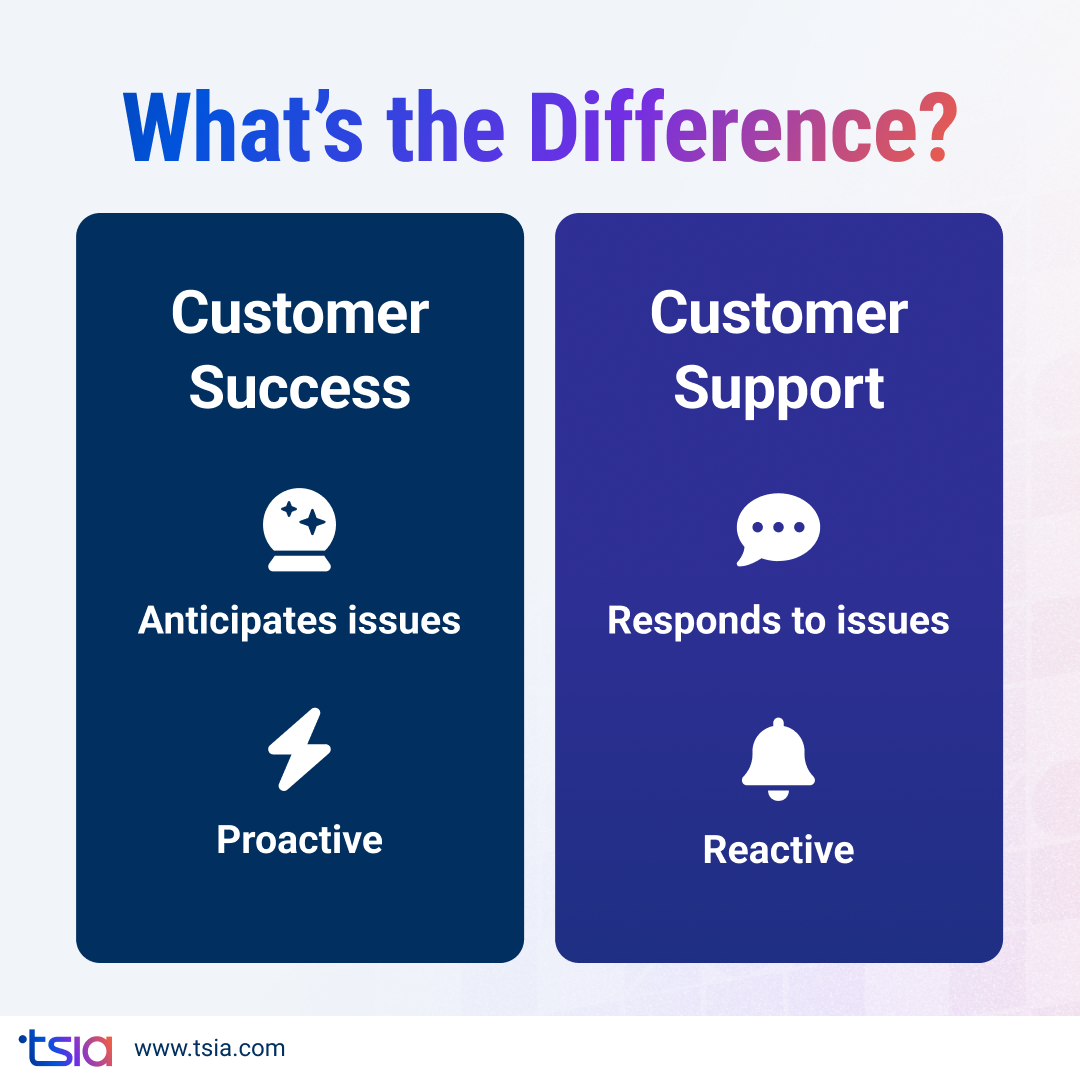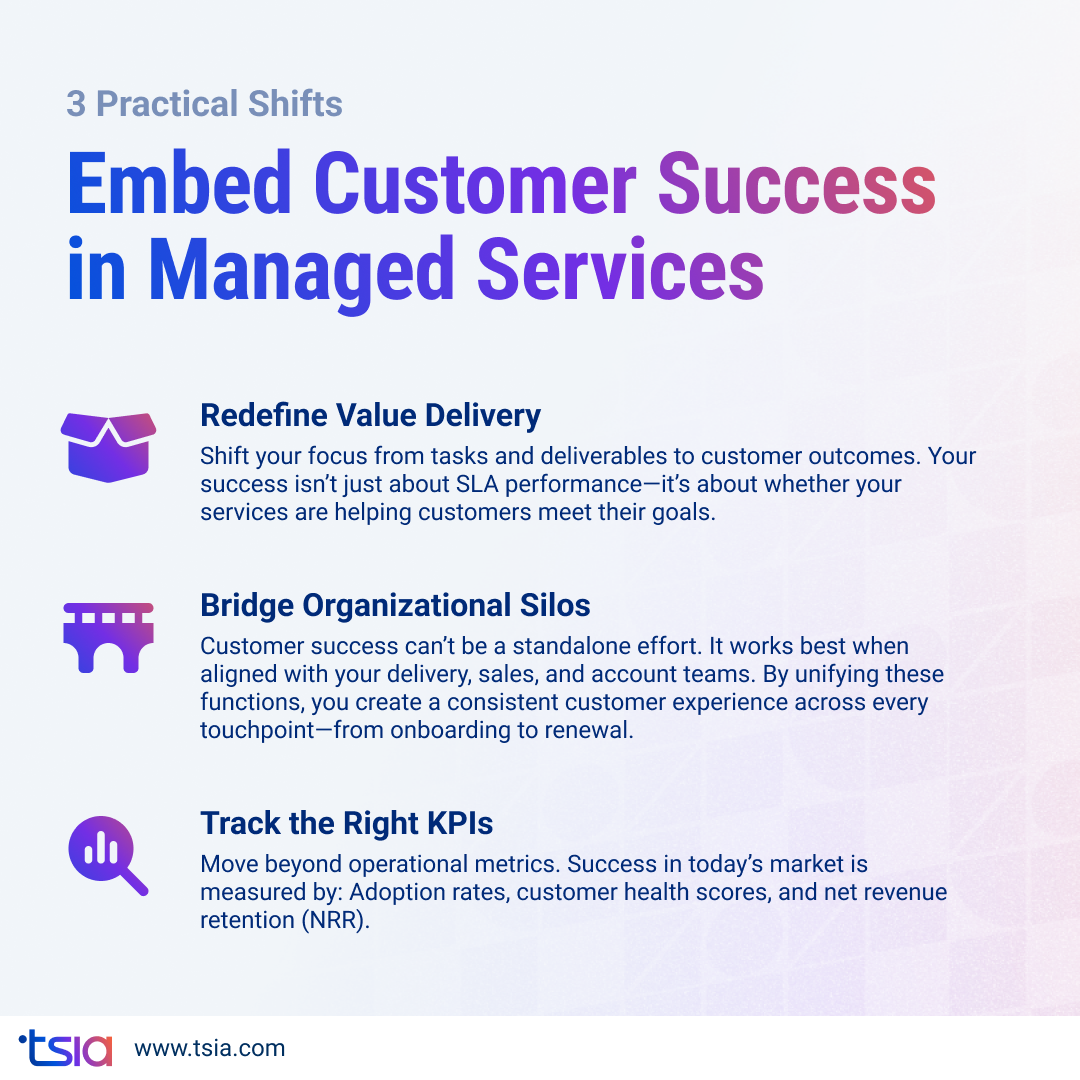The way your customers define value is changing, and if your managed services business is still focused solely on delivery and SLAs, you’re at risk of falling behind.
Today’s clients don’t just want uptime or quick issue resolution; they also want proactive support. They want outcomes. They want to know that your services are helping them grow, adapt, and succeed over time. That’s why more managed services providers are embracing a customer success mindset.
By focusing on adoption, expansion, and renewal—the often-overlooked parts of the LAER model—you can turn customer success into a strategic function that drives retention, deepens relationships, and accelerates recurring revenue growth. This blog examines what that shift entails in practice and how your business can benefit from it.
Key Takeaways
- Traditional managed services models focused on delivery and SLAs are no longer enough—customers now expect strategic outcomes and ongoing value.
- Embedding customer success roles and practices can significantly improve base revenue growth and recurring revenue retention.
- Shifting to a customer success mindset helps managed services providers align with the complete LAER model—adopt, expand, and renew—not just land.
Why Managed Services Need a Customer Success Mindset: A Service Model That Needs Rethinking
Traditional managed services have long centered on fulfilling contractual obligations. Once the service is sold, the focus shifts to ensuring uptime, resolving tickets, and hitting SLA targets. While these are important, they no longer define success in the eyes of your customers.
Today’s clients want more than reactive support. They want outcomes—the measurable improvements to their business performance. They want alignment between their goals and your services. If your offer stops at delivery, you’re missing the opportunity to build long-term value. To stay relevant, you need to shift from a delivery-based model to one that drives value across the customer lifecycle.
How Customer Expectations Are Changing in Managed Services
Your customers expect more than just, "keeping the lights on." They’re seeking strategic partners who understand their business, anticipate their needs, and help them achieve growth.
This means:
- They expect guidance on how to fully use the services they’re paying for.
- They expect accountability—not just that you’ll fix problems, but that you’ll help avoid them.
- They expect proactive engagement, not reactive support.
If your managed services business isn’t adapting to these expectations, you’re likely leaving revenue and customer trust on the table.
Related: Driving Business Value Through Customer Success in Managed Services
Common Pitfalls in the Traditional Managed Services Model
Relying on a traditional delivery model creates several risks that can hurt your ability to grow:
- Overreliance on SLA metrics: Meeting SLAs doesn’t guarantee customer satisfaction or renewal.
- Siloed teams: Sales, delivery, and support often operate in isolation, leaving customers feeling disconnected.
- Reactive service: Waiting for the customer to raise issues means you're always one step behind.
These pitfalls create churn risks and make it harder to retain and grow existing accounts.
Related: Optimizing Customer Success for MSP Growth
Customer Success vs. Customer Support: What’s the Real Difference?
It’s a common misconception to treat customer success as a rebranded support team, but they serve very different functions:
- Support teams respond to issues. Customer success teams anticipate them.
- Support is reactive. Customer success is proactive.
In managed services, a customer success role—often referred to as a Customer Success Manager (CSM), Engagement Manager, or Client Business Manager—is designed to understand the customer’s business goals and guide them toward achieving long-term value. Instead of focusing solely on contract deliverables, they focus on outcomes, adoption, and expansion opportunities.

By building trusted advisor relationships with customer stakeholders, CSMs become the face of value and the key to renewal and growth.
Related: Elevating Customer Experiences and Driving Business Value in Managed Services
3 Practical Shifts To Embed Customer Success in Managed Services
If you're ready to embed customer success into your managed services model, start by making these three foundational changes.
Redefine Value Delivery
Shift your focus from tasks and deliverables to customer outcomes. Your success isn’t just about SLA performance—it’s about whether your services are helping customers meet their goals.
- Are your customers fully adopting the service?
- Are they achieving the business outcomes promised during the sales cycle?
- Are they open to expanding their partnership with you?
Bridge Organizational Silos
Customer success can’t be a standalone effort. It works best when aligned with your delivery, sales, and account teams. By unifying these functions, you create a consistent customer experience across every touchpoint—from onboarding to renewal.
Track the Right KPIs
Move beyond operational metrics. Success in today’s market is measured by:
- Adoption rates: How effectively are customers using your services?
- Customer health scores: Are there signs of risk or opportunity?
- Net revenue retention (NRR): Are you growing your customer accounts over time?
These KPIs provide a more comprehensive view of customer engagement and your business's overall health.

Managed Services 2.0: A Framework for the Future
To stay competitive, managed service providers need a new framework—one built on customer success as a service.
At its core, this updated framework should include:
- Dedicated customer success roles focused on the AER (Adopt, Expand, Renew) side of the LAER model.
- Integrated teams that collaborate across delivery, sales, and success to ensure customers receive consistent, strategic support.
- Lifecycle engagement strategies that guide customers from initial onboarding through long-term growth and partnership.
By adopting this managed services framework, you can move from a transactional business model to a value-based one, turning short-term wins into long-term growth.

Build Loyalty by Becoming Strategic, Not Just Operational
Your customers don’t just want services; they want partners who understand their goals and help them succeed. By embedding customer success into your managed services model, you’re doing more than improving retention metrics. You’re transforming your business into a strategic asset your clients can’t live without.
Customer success isn’t an optional add-on—it’s how you differentiate in a crowded market. It’s how you grow sustainably. And it’s how you turn your customers into advocates. Now is the time to evolve from a delivery-focused to an outcome-driven approach. The opportunity is clear, and the results speak for themselves.
FAQ: Common Questions About Customer Success in Managed Services
What’s the difference between onboarding and adoption?
Onboarding is the initial setup and orientation process. Adoption is the customer’s ongoing use of your services in ways that drive their business outcomes. Customer success helps guide both.
Who should own renewal conversations—Customer Success or Sales?
Customer success teams should initiate and guide renewal discussions, especially when they’re tied to the customer’s success metrics. For larger or more complex deals, they can partner with sales.
Can customer success be monetized in managed services?
Yes. Many organizations bundle premium customer success support into higher-tier packages or offer it as an add-on. Whether it’s paid or included, the value delivered should be clear to the customer.
Smart Tip: Embrace Data-Driven Decision Making
Making smart, informed decisions is more crucial than ever. Leveraging TSIA’s in-depth insights and data-driven frameworks can help you navigate industry shifts confidently. Remember, in a world driven by artificial intelligence and digital transformation, the key to sustained success lies in making strategic decisions informed by reliable data, ensuring your role as a leader in your industry.













